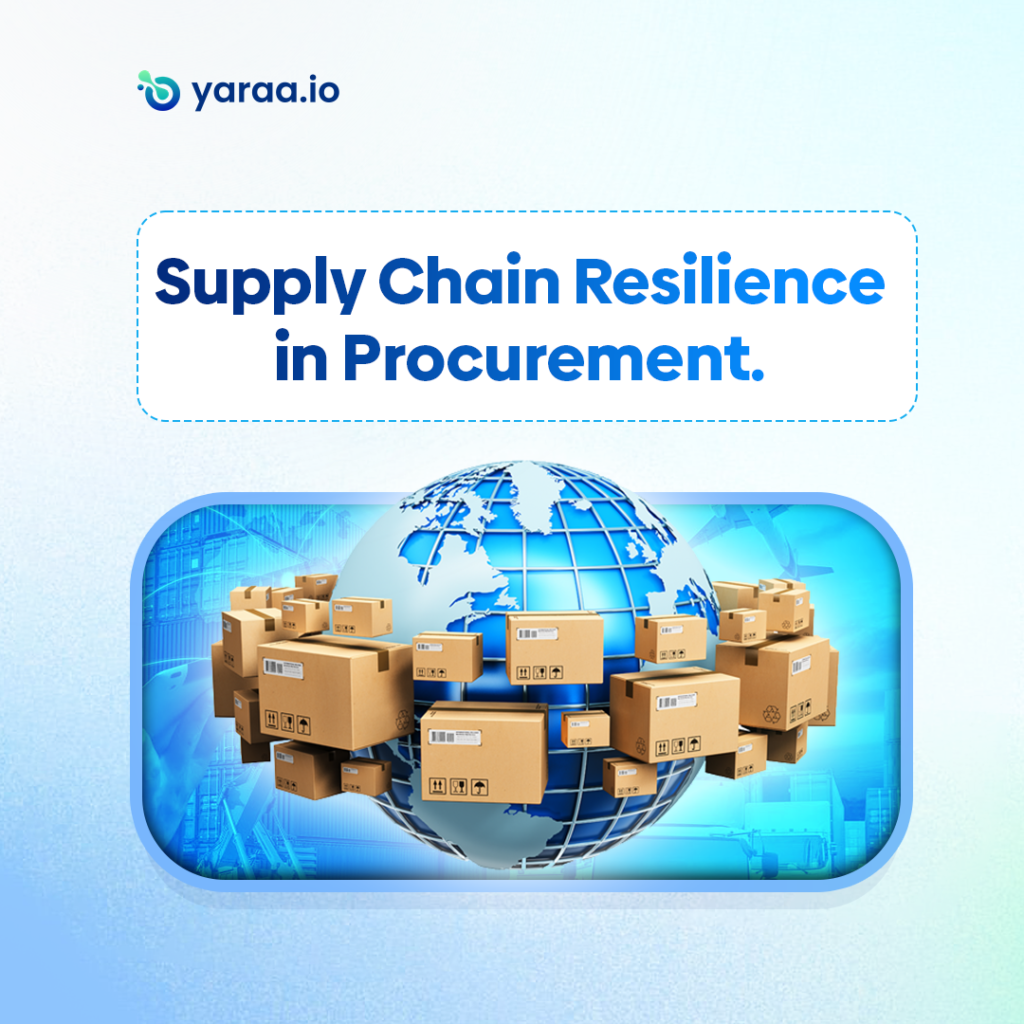In an era marked by global uncertainties and disruptions, the topic of supply chain resilience has emerged as a pivotal aspect of procurement strategies. The traditional approach of focusing solely on cost efficiency is evolving, with businesses recognizing the importance of building resilient supply chains that can withstand unexpected challenges. This blog post delves into the intricacies of supply chain resilience in procurement, exploring its significance, key components, and strategies for implementation.

The Importance of Supply Chain Resilience
The global landscape has witnessed unprecedented disruptions, from natural disasters to economic crises and, most recently, a global pandemic. Such events have underscored the vulnerability of traditional supply chains and the need for resilience. Procurement, once primarily concerned with cost savings, is adapting to a new paradigm that places equal importance on mitigating risks and ensuring continuity.
Understanding Supply Chain Resilience in Procurement
Supply chain resilience in procurement goes beyond merely reacting to disruptions; it involves proactive strategies to anticipate, adapt, and recover. This section explores the multifaceted nature of resilience, encompassing aspects like diversification of suppliers, robust risk management, and the integration of technology for real-time visibility.
Key Components of a Resilient Supply Chain
- Diversification: Relying on a single source for crucial supplies poses a significant risk. Businesses are increasingly diversifying their supplier base to reduce dependency on specific regions or vendors.
- Risk Management: Identifying and assessing potential risks is a crucial step in building resilience. This includes geopolitical, economic, and operational risks, among others.
- Technology Integration: Leveraging technologies like AI, IoT, and blockchain enhances visibility across the supply chain. Real-time data allows for quicker responses to disruptions.
- Collaboration: Building strong relationships with suppliers and fostering collaboration can lead to shared risk management and swift adaptation in times of crisis.
Strategies for Implementing Supply Chain Resilience
- Scenario Planning: Developing and testing various scenarios helps businesses understand potential vulnerabilities and devise strategies for different situations.
- Investing in Technology: Implementing advanced technologies that provide end-to-end visibility and predictive analytics can significantly enhance a company’s ability to respond to disruptions.
- Continuous Monitoring and Adaptation: Regularly reassessing and updating resilience strategies ensures they remain effective in an ever-changing global landscape.
Also read: DIGITAL TRANSFORMATION IN PROCUREMENT
Embracing the Future with Yaraa
As businesses worldwide navigate the complexities of building resilient supply chains, technology emerges as a crucial ally. Yaraa, a cutting-edge procurement solution, aligns seamlessly with the principles of supply chain resilience. Through its advanced features such as real-time data analytics, intelligent risk management, and streamlined collaboration capabilities, Yaraa empowers businesses to proactively manage their supply chains.
In conclusion, the journey toward a resilient supply chain in procurement is both a challenge and an opportunity. By adopting forward-thinking strategies and leveraging innovative solutions like Yaraa, businesses can not only withstand disruptions but also emerge stronger, more agile, and ready to embrace the future of procurement. Book a demo to get started on Yaraa today.
Your writing is so genuine and heartfelt It’s refreshing to read a blog that is not trying to sell something or promote an agenda
Your writing is a breath of fresh air It’s clear that you put a lot of thought and effort into each and every post
Keep up the incredible work! I can’t wait to see what you write next.
This blog post is packed with great content!
I appreciate how well-researched and detailed your posts are It’s evident that you put a lot of time and effort into providing valuable information to your readers